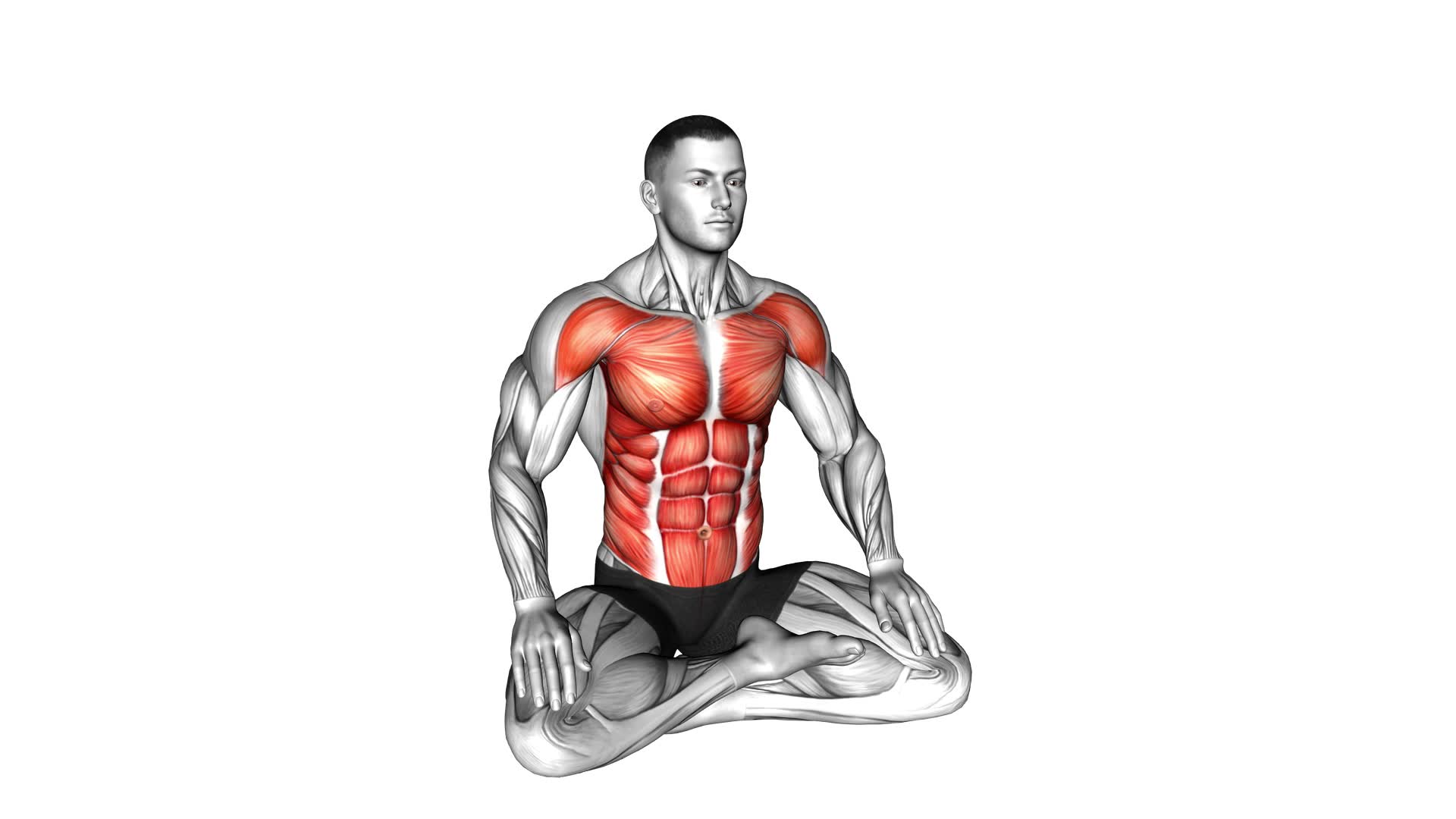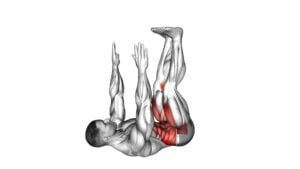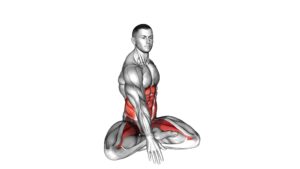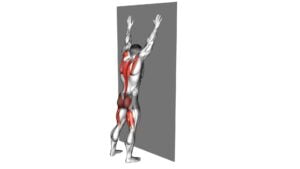Sitting Opposite Tap (male) – Video Exercise Guide & Tips

Get ready to improve your fitness with the Sitting Opposite Tap exercise! In this video exercise guide, you'll learn the benefits and proper technique for this effective workout.
Watch This Exercise Video
Set up is easy, and we'll provide you with step-by-step instructions to ensure you're getting the most out of each rep. Avoid common mistakes and maximize your results with our helpful tips.
Whether you're a beginner or advanced, this exercise can be modified to suit your fitness level.
Let's get started!
Key Takeaways
- The Sitting Opposite Tap exercise can improve core strength, stability, balance, and coordination.
- It can help prevent lower back pain and improve overall body control and toning.
- Proper set up and positioning, such as maintaining a straight back and engaging core muscles, is crucial for correct execution of the exercise.
- Common mistakes to avoid include not sitting directly across from the tap, not maintaining proper posture, using uncontrolled movements, and neglecting core engagement.
Benefits of the Sitting Opposite Tap Exercise
You can experience multiple benefits from regularly performing the Sitting Opposite Tap exercise.
This exercise is a great way to improve your core strength and stability. By engaging your abdominal muscles and lower back, you can develop a strong and stable core, which is essential for maintaining proper posture and preventing lower back pain.
Additionally, the Sitting Opposite Tap exercise can help improve your balance and coordination. As you tap your opposite hand to your opposite foot, you challenge your body's ability to maintain balance and control.
This exercise can also be modified for beginners by starting with smaller movements and gradually increasing the range of motion. It's important to maintain proper form techniques throughout the exercise to maximize its benefits and prevent injury. Keep your back straight, engage your core, and perform the movements in a controlled manner.
How to Set Up for the Sitting Opposite Tap Exercise
To set up for the Sitting Opposite Tap exercise:
- Begin by sitting on a bench or chair with your feet flat on the ground and knees bent at a 90-degree angle.
- Make sure your back is straight and your core is engaged.
- Avoid common mistakes such as slouching or arching your back, as this can reduce the effectiveness of the exercise.
Setting up properly for this exercise will ensure that you reap the benefits of improved core strength and stability.
Proper Positioning for Exercise
Position yourself directly across from the tap while sitting.
To ensure proper positioning for the Sitting Opposite Tap exercise, follow these steps:
- Maintain a straight back: Sit up tall and engage your core muscles to support your spine. This helps improve posture and prevents strain on your back.
- Relax your shoulders: Allow your shoulders to drop and avoid hunching forward. This promotes a more comfortable and effective exercise experience.
- Bend your knees: Keep your knees slightly bent and your feet flat on the ground. This provides stability and prevents unnecessary stress on your joints.
- Find a comfortable distance: Adjust your position so that you can comfortably reach the tap without overstretching. This ensures a safe and effective workout.
Common Mistakes to Avoid
To avoid common mistakes when setting up for the Sitting Opposite Tap exercise, ensure that you're sitting directly across from the tap. One common mistake isn't positioning yourself correctly in relation to the tap.
It's important to sit directly opposite the tap to ensure proper form and technique. This will help you maintain balance and stability throughout the exercise.
Another mistake to avoid isn't maintaining a straight back and upright posture. Slouching or leaning forward can put unnecessary strain on your back and diminish the effectiveness of the exercise.
Lastly, make sure to use controlled and deliberate movements when tapping the tap. Avoid swinging or jerking your body, as this can lead to injury and may compromise your form.
Benefits of This Exercise
Maximize the benefits of the Sitting Opposite Tap exercise by utilizing proper setup and technique. Here are four reasons why this exercise is beneficial and how you can vary it for even greater results:
- Improved core strength: The Sitting Opposite Tap targets your abdominal muscles, helping to strengthen and tone your core.
- Enhanced balance and stability: By sitting on the floor and tapping your feet from side to side, you challenge your balance and stability, which can have positive effects on your overall coordination.
- Increased flexibility: This exercise requires you to reach across your body, promoting flexibility in your hips, lower back, and shoulders.
- Engaged upper body muscles: You can vary the exercise by incorporating arm movements, such as reaching overhead while tapping your feet. This adds an extra challenge and engages your upper body muscles.
Step-by-Step Guide to Performing the Sitting Opposite Tap Exercise
To perform the Sitting Opposite Tap exercise, you'll need a chair and a stable surface. This exercise is great for targeting your core muscles and improving your balance.
Here is a step-by-step guide to help you perform it correctly.
- Sit upright on a chair with your feet flat on the ground and your knees bent at a 90-degree angle.
- Place your hands on the armrests for support.
- Lift your right foot off the ground and extend it straight out in front of you, parallel to the floor.
- At the same time, lift your left hand off the armrest and tap your right foot with your left hand.
- Return your right foot and left hand to their starting positions.
- Repeat the movement on the opposite side, lifting your left foot and tapping it with your right hand.
- Continue alternating sides for the desired number of repetitions.
- Remember to engage your core muscles throughout the exercise and maintain proper form.
- Breathe in deeply as you lift your foot and hand, and exhale as you return to the starting position.
Common Mistakes to Avoid During the Sitting Opposite Tap Exercise
When performing the Sitting Opposite Tap exercise, it's important to be aware of common mistakes to avoid. Here are four common mistakes and tips to help you maintain proper form techniques and modifications for beginners:
- Lack of core engagement: One common mistake isn't engaging your core muscles properly. To avoid this, focus on tightening your abdominal muscles throughout the exercise. This will help stabilize your body and prevent strain on your lower back.
- Incorrect hand placement: Placing your hands too far apart or too close together can compromise your form. Make sure to position your hands shoulder-width apart on the floor, directly under your shoulders. This will ensure proper alignment and distribute your body weight evenly.
- Lifting your hips too high: Raising your hips too high can put excessive strain on your lower back and reduce the effectiveness of the exercise. Keep your hips in line with your shoulders and maintain a straight line from your head to your heels.
- Using momentum instead of control: Swinging your legs or using momentum to tap your opposite hand can diminish the benefits of the exercise. Focus on controlled movements, ensuring that you tap your opposite hand by using your core muscles to lift and reach across.
Tips to Maximize the Effectiveness of the Sitting Opposite Tap Exercise
To maximize the effectiveness of the Sitting Opposite Tap exercise, there are a few key tips to keep in mind.
First, focus on maintaining proper form throughout the exercise, ensuring that your back is straight and your core is engaged.
Additionally, pay attention to your breathing, exhaling as you tap your opposite foot to the ground.
Proper Form Techniques
To maximize the effectiveness of the Sitting Opposite Tap exercise, focus on maintaining a strong core and engaging your abdominal muscles throughout the movement. Proper form techniques and breathing techniques are essential to ensure that you're performing the exercise correctly and getting the most out of it.
Here are four tips to help you maximize the effectiveness of the Sitting Opposite Tap:
- Keep your back straight: Maintain good posture throughout the exercise to avoid straining your back and to engage your core muscles more effectively.
- Control your breathing: Inhale deeply before you start the movement and exhale as you tap your opposite foot. This will help you engage your core and stabilize your body.
- Use slow and controlled movements: Avoid rushing through the exercise. Focus on the quality of the movement rather than the speed, and concentrate on engaging your core muscles.
- Visualize your abs working: Imagine your abdominal muscles contracting and working with each tap. This mental connection can help you engage your core more effectively and maximize the effectiveness of the exercise.
Breathing Techniques
To further enhance the effectiveness of the Sitting Opposite Tap exercise, incorporate proper breathing techniques that engage your core muscles and stabilize your body.
Breathing plays a crucial role in any exercise, as it helps to oxygenate your muscles and improve overall performance. When performing the Sitting Opposite Tap, focus on deep diaphragmatic breathing.
Inhale deeply through your nose, allowing your abdomen to expand as you fill your lungs with air. As you exhale, engage your core muscles and imagine drawing your belly button towards your spine.
This mindful breathing technique not only helps to stabilize your body, but also promotes relaxation and reduces stress.
Modifications for Beginners
To maximize the effectiveness of the Sitting Opposite Tap exercise, regularly incorporate modifications for beginners. These modifications for newbies will help you gradually build strength and improve your form. Here are four beginner modifications to consider:
- Start with a shorter tapping distance: Begin by tapping your feet together with a smaller gap between them. As you progress, gradually increase the distance to challenge your balance and coordination.
- Use a chair for support: If you're finding it difficult to balance, place a chair next to you and lightly hold onto it for support. This will help you maintain stability while you work on your tapping motion.
- Slow down the tapping speed: Instead of tapping rapidly, take your time and focus on performing each tap with control. Slowing down the movement will allow you to concentrate on your form and maintain balance.
- Reduce the number of taps: If you're struggling to complete the recommended number of taps, start with a lower target and gradually increase the repetitions as you get stronger.
By incorporating these beginner modifications, you can gradually progress and maximize the effectiveness of the Sitting Opposite Tap exercise.
Now, let's explore variations and modifications for the sitting opposite tap exercise.
Variations and Modifications for the Sitting Opposite Tap Exercise
How can you modify the sitting opposite tap exercise?
There are several variations and progressions you can incorporate to make this exercise more challenging or tailored to your specific fitness level.
To increase the difficulty of the sitting opposite tap exercise, you can add weights. Holding dumbbells or a medicine ball while performing the exercise will engage your core and upper body muscles even more. Another variation is to increase the speed of the taps, which will elevate your heart rate and provide a cardiovascular challenge.
If you're a beginner or have limited mobility, there are modifications available for you as well. Instead of tapping your toes, you can start by tapping your heels or ankles. This reduces the range of motion required and allows you to build strength gradually. Additionally, you can perform the exercise while seated on a stability ball or using a resistance band for added support.
Remember to always listen to your body and choose the variations or modifications that are appropriate for your fitness level. As you become more comfortable and stronger, you can gradually progress to more challenging variations of the sitting opposite tap exercise.
Frequently Asked Questions
Can the Sitting Opposite Tap Exercise Help Improve Core Strength?
Improving core strength is essential for overall fitness.
When it comes to the sitting opposite tap exercise, proper form is crucial. This exercise targets the core muscles, including the abs and obliques.
By maintaining proper form, you can maximize the benefits of this exercise.
Incorporating the sitting opposite tap exercise into your regular workout routine can help strengthen your core, improve stability, and enhance overall athletic performance.
Is It Necessary to Use a Specific Type of Chair for This Exercise?
When performing the sitting opposite tap exercise, you may wonder if you need a specific type of chair. The exercise can be done on any sturdy chair that allows you to sit comfortably and maintain proper form.
The benefits of sitting opposite tap include improved core strength and stability. By engaging your abdominal muscles and focusing on controlled movements, you can strengthen your core and enhance overall balance.
Can the Sitting Opposite Tap Exercise Be Modified for Individuals With Knee Problems?
If you have knee problems, there are knee-friendly modifications you can make to the sitting opposite tap exercise. These modifications can help reduce strain on your knees and make the exercise more comfortable for you.
Seated exercises, like the sitting opposite tap, are often recommended for knee rehabilitation because they're effective in strengthening the muscles around the knee joint without putting excessive stress on the knees. Incorporating seated exercises into your routine can help improve your knee strength and flexibility.
How Many Repetitions and Sets Should Be Performed for Maximum Benefits?
For maximum benefits, the number of repetitions and sets for the sitting opposite tap exercise will depend on your fitness goals. Different repetition and set schemes can be used to target specific outcomes, such as muscle endurance or strength.
However, it's crucial to prioritize proper form and technique to prevent injury and ensure effective results. Maintaining proper alignment and engaging the correct muscles throughout the exercise is essential.
Always consult with a qualified fitness professional for personalized recommendations.
Are There Any Alternative Exercises That Can Be Done in Combination With the Sitting Opposite Tap Exercise for a More Comprehensive Workout?
If you're looking to add some variety to your workout routine and get a more comprehensive workout, there are several alternative exercises you can do in combination with the sitting opposite tap exercise.
By incorporating exercises like planks, Russian twists, and bicycle crunches, you can target different muscle groups and work on your core strength and stability.
Adding these exercises will help you achieve a well-rounded and effective workout.
Conclusion
In conclusion, the Sitting Opposite Tap exercise is a beneficial workout for strengthening your core and improving balance. By following the step-by-step guide and avoiding common mistakes, you can maximize the effectiveness of this exercise.
Additionally, incorporating variations and modifications can add variety to your routine. Remember to consult with a fitness professional before starting any new exercise program.
Keep practicing and enjoy the benefits of the Sitting Opposite Tap exercise.

Author
Years ago, the spark of my life’s passion ignited in my mind the moment I stepped into the local gym for the first time. The inaugural bead of perspiration, the initial endeavor, the very first surge of endorphins, and a sense of pride that washed over me post-workout marked the beginning of my deep-seated interest in strength sports, fitness, and sports nutrition. This very curiosity blossomed rapidly into a profound fascination, propelling me to earn a Master’s degree in Physical Education from the Academy of Physical Education in Krakow, followed by a Sports Manager diploma from the Jagiellonian University. My journey of growth led me to gain more specialized qualifications, such as being a certified personal trainer with a focus on sports dietetics, a lifeguard, and an instructor for wellness and corrective gymnastics. Theoretical knowledge paired seamlessly with practical experience, reinforcing my belief that the transformation of individuals under my guidance was also a reflection of my personal growth. This belief holds true even today. Each day, I strive to push the boundaries and explore new realms. These realms gently elevate me to greater heights. The unique combination of passion for my field and the continuous quest for growth fuels my drive to break new ground.







